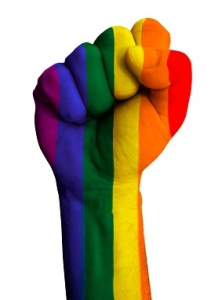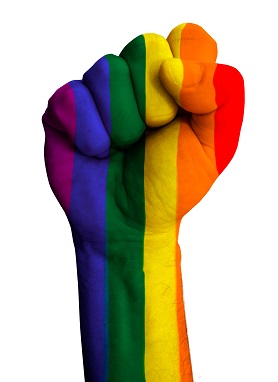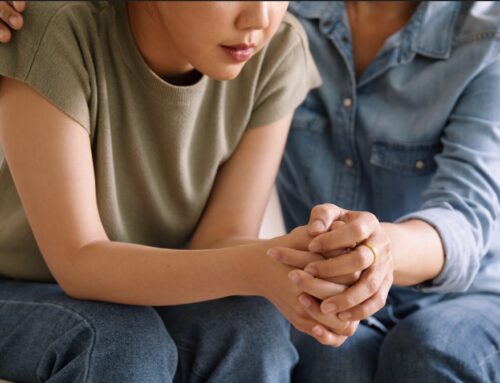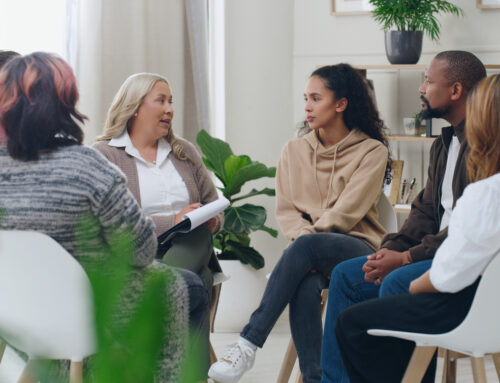 The often portrayed media image of eating disorders as something that effects only young, white, middle- and upper-class women continues to render many with eating disorders invisible. One such population is people who are lesbian, gay, bisexual, transgender, queer or questioning (LGBTQ). Discussions of eating disorders in this community have traditionally been rife with stereotypes. As our field has evolved, we have begun to realize that the stereotypes don’t correspond with the reality of many of our patients. LGBTQ people have also come forward asking for eating disorder treatment, and demanding that their providers educate themselves. So let’s talk about some of the myths & facts about LGBTQ folks and eating disorders.
The often portrayed media image of eating disorders as something that effects only young, white, middle- and upper-class women continues to render many with eating disorders invisible. One such population is people who are lesbian, gay, bisexual, transgender, queer or questioning (LGBTQ). Discussions of eating disorders in this community have traditionally been rife with stereotypes. As our field has evolved, we have begun to realize that the stereotypes don’t correspond with the reality of many of our patients. LGBTQ people have also come forward asking for eating disorder treatment, and demanding that their providers educate themselves. So let’s talk about some of the myths & facts about LGBTQ folks and eating disorders.
Myth: “Lesbians don’t get eating disorders because they don’t have to be attractive to men.” This longstanding myth has so many problematic assumptions it is hard to unpack. It contains the assumption that eating disorders are only caused by worry about one’s appearance (myth!), as well as the idea that heterosexual women’s eating disorders are fueled solely by the need to appear desirable to men (myth!).
The facts are that eating disorders are caused by a variety of factors that interact to create the disorder. These include genetics, stress, life experiences, and cultural expectations around standards of beauty. Additionally, it is a fact that lesbian and bisexual women do get eating disorders, just like heterosexual women. Clearly eating disorders are more complicated than just a worry about whether one is attractive to men.
Myth: “Men who have eating disorders must be gay.” This myth also contains a lot of problematic assumptions. For one, there is an implicit assumption that since eating disorders are thought of as something that only happen to women, men who get eating disorders must be like women. And the second implication that men who are like women are therefore gay. All of these things are myths. Eating disorders aren’t just something that happen to women. Men who get eating disorders have the full range of masculinity and femininity as men who don’t. And (may nobody ever have to say this again) being gay doesn’t make men like women.
What are the facts about gay men and eating disorders? It is hard to say. Estimates suggest that a higher percentage of men who seek treatment for eating disorders identify as gay than in the general population. The problem with this statistic is that many heterosexual men do not seek treatment for eating disorders, because men in general are not identified as having eating disorders or referred for treatment, and sometimes because they are afraid they will be labeled as ‘gay’ if their eating disorder is discovered. On the other hand, cultural expectations around thinness, muscularity, and beauty do seem to influence eating disorders, and at times the gay male community has been criticized for being too focused on looks and body image. This might suggest a higher risk of developing eating disorders for gay men. Some studies that are based on the general population, not on those who seek treatment for an eating disorder, suggest that disordered eating occurs more often in gay and bisexual men. So while it may be that gay and bisexual men are more likely than their heterosexual counterparts to develop an eating disorder, the fact is that men of all sexual orientations develop eating disorders.
Myth: “Transgender people don’t get eating disorders.” The invisibility of transgender people in general further complicates matters for transgender people with eating disorders. Transgender people experience gender dysphoria, a discomfort with their biological sex and a sense of being a man or woman that does not line up with their sex. For many transgender people, this manifests as negative body image and intense discomfort with their physical body. As negative body image is also a driving force in the development of eating disorders, it is not surprising that many transgender people develop disordered eating.
Some of the factors that place people at risk for eating disorders occur at higher rates in the LGBTQ community. These include experiencing psychosocial stress, such as oppression, discrimination, homophobia, and transphobia. These experiences often correspond with high rates of depression, anxiety and trauma, which also contribute to the risk of developing an eating disorder. A peer group that is preoccupied with body image, shape and weight increases the risk of developing an eating disorder, and some portions of the LGBTQ community have been critiqued for this preoccupation. Taken together, these factors suggest that the risk of eating disorders could be higher in the LGBTQ community than in the general population. It is well documented that the rates of depression, anxiety, trauma, and substance abuse are higher in the LGBTQ population as a result of these stressors.
While research on LBGTQ people with eating disorders is relatively limited, the findings that have emerged are concerning. Transgender people seem to have the highest rates of disordered eating when compared to both other LGBTQ people and people who are heterosexual cisgendered (i.e. non-transgender) people. According to research done in 2015 by Stefan Diemer, rates of disordered eating for lesbian, gay, and bisexual college students are higher than for heterosexual students. Research done in 2009 found that during adolescence, girls who identify as lesbian, bisexual, or “mostly heterosexual” and boys who identify as gay, bisexual or “mostly heterosexual” have higher rates of binge eating and purging than their heterosexual peers.
So what can treatment providers do with this information? For starters, it is important that treatment providers for eating disorders do not make assumptions about their clients’ gender identity and sexual orientation. Paying attention to language and giving clients a safe space to self-identify is important (for example, “are you in a relationship?” rather than “do you have a boyfriend or husband?”). Creating safe spaces for LGBTQ clients to talk about their particular stressors and how they impact their eating disorder is important. LGBTQ clients may or may not feel comfortable discussing their sexual orientation or gender identity in group therapy; treatment providers should take care to allow clients to make these decisions for themselves and to ensure a safe space if they do disclose. Transgender clients, in particular, may experience body image difficulties in ways that are complicated by their gender identity as well as the cultural expectations around beauty and thinness that effect everyone. They should be offered the opportunity to discuss these things in treatment, but not be forced to do so.
And what if you are LGBTQ and dealing with an eating disorder? Don’t be afraid to ask for help. When looking for therapists or other treatment providers, ask them if they have worked with other LGBTQ clients. If a provider can’t comfortably answer this question (even if the answer is no), then you probably don’t want to work with them. If you are looking at getting intensive treatment (for example, residential), ask the facility you are looking at what their experience is working with LGBTQ clients. Again, you are looking for somebody who is willing and comfortable talking about this with you. Bonus points if they also have experience with LGBTQ clients. You have the right to ask for what you need in treatment.
####
About the author:
 Angela Rowan, LICSW, is the Director of Walden Behavioral Care’s Amherst Clinic. She has worked for many years with LGBTQ people, both in community mental health and in private practice, where she specialized in working with transgender people and their families. Her additional clinical interests include eating disorders, DBT, and family therapy. She lives in Western Massachusetts with her three cats, two children, and one spouse.
Angela Rowan, LICSW, is the Director of Walden Behavioral Care’s Amherst Clinic. She has worked for many years with LGBTQ people, both in community mental health and in private practice, where she specialized in working with transgender people and their families. Her additional clinical interests include eating disorders, DBT, and family therapy. She lives in Western Massachusetts with her three cats, two children, and one spouse.








I have a teenage son who is gay, with an eating dissorder, (he was in a treatment facility), depression, anxiety and just broke up with his first boyfriend. I am at a loss as to what to do for him….and where I turn for advice, help or just someone to listen….please anything you could give me would be greatly appreciated
Hi Kelly, I’m very sorry to hear that your son is experiencing a difficult time – and by extension – so are you. It is not easy watching those we love in pain. I would be happy to provide you with resources in your area. If you could email me at ncohen@waldenbehavioralcare.com, I will do my best to connect you with providers / groups in your area.
Hang in there : ) – Natalie